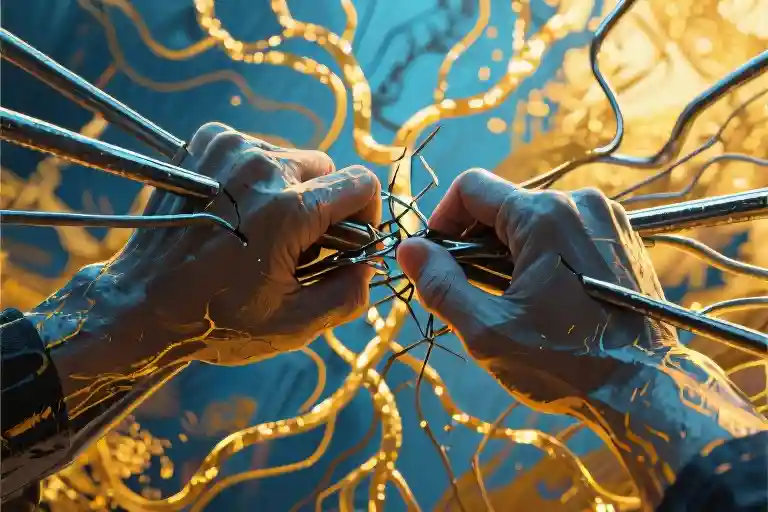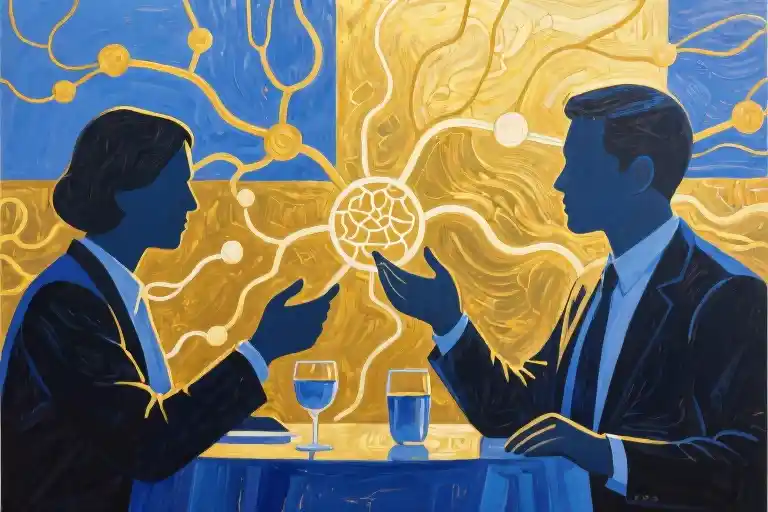The clock ticks past 2 AM as you stare at the blank document, the glow of your laptop illuminating a half-empty coffee cup and crumpled snack wrappers. We’ve all been there—that moment when panic sets in realizing how much time we’ve wasted scrolling through cat videos instead of working on that looming deadline. Recent studies from the University of Cambridge show 88% of college students and 75% of working professionals regularly experience this exact scenario, with procrastination costing the average person 218 hours of lost productivity annually.
What makes this universal struggle so persistent? The answer lies in an ancient battle between two parts of your brain. Your limbic system craves immediate gratification (yes, those Instagram likes do feel good), while your prefrontal cortex tries to plan for long-term rewards. When the former wins, we find ourselves binge-watching shows instead of preparing that quarterly report.
But here’s the liberating truth: procrastination isn’t about laziness or poor time management. It’s often a emotional response to tasks we perceive as threatening, boring, or overwhelming. The good news? With the right strategies, we can outsmart our own brains. Before we dive into solutions, take this quick self-assessment:
- When facing a large project, do you:
a) Research excessively but never start (Perfectionist)
b) Wait until the last possible minute (Pressure-Seeker)
c) Get paralyzed deciding where to begin (Decision-Fatigued) - Your most common distraction is:
a) Social media rabbit holes
b) “Quick” chores that become hour-long tasks
c) Constantly checking emails/messages - After procrastinating, you typically feel:
a) Intense self-criticism
b) Adrenaline-fueled focus (during crunch time)
c) Numb resignation
Your answers reveal your personal procrastination pattern—whether it’s fear of imperfection, craving last-minute pressure, or simple task paralysis. Understanding this is the first step to breaking the cycle. In the following sections, we’ll explore not just quick fixes but sustainable systems to transform your relationship with productivity, starting with why your brain seems wired to delay important work.
Why Your Brain Keeps Choosing Procrastination
The cursor blinks on a blank document. Your phone buzzes with a new notification. Suddenly, reorganizing your sock drawer seems vitally important. We’ve all been there – that moment when procrastination feels less like a choice and more like an irresistible biological imperative. Because in many ways, it is.
Our brains are wired for immediate rewards, a leftover survival mechanism from when our ancestors prioritized finding food over planning next week’s meals. The ventral tegmental area floods our system with dopamine when we choose short-term pleasures (hello, TikTok scroll) over long-term gains (that report due Friday). It’s not moral failing – it’s neuroscience.
The Five Procrastination Personas
Through years of coaching clients, I’ve identified five distinct procrastination patterns:
- The Perfectionist: Frozen by the fear of producing subpar work (“If I can’t excel, I won’t begin”)
- The Overwhelmed: Paralyzed by complex tasks (“Where would I even start?”)
- The Rebel: Resists external deadlines (“You can’t make me do it!” says their inner toddler)
- The Distractible: Constantly hijacked by shiny objects (“I just checked email…for three hours”)
- The Decision-Avoider: Postpones choosing (“Maybe the perfect option will appear tomorrow”)
Most of us recognize ourselves in two or three of these. The key isn’t labeling yourself as lazy, but understanding your brain’s particular resistance style.
The Zeigarnik Effect: Why Unfinished Tasks Haunt Us
Here’s the cruel irony: procrastination creates its own punishment. Psychologist Bluma Zeigarnik discovered that incomplete tasks occupy mental real estate far beyond their actual importance. That half-written proposal? It’s not just on your desk – it’s squatting in your prefrontal cortex, draining cognitive resources with constant low-level anxiety.
This explains why clearing small tasks creates disproportionate relief. When researchers tracked office workers, those who completed micro-tasks (under 5 minutes) immediately reported 23% lower stress levels than colleagues who postponed them. The brain rewards action, even tiny actions, with chemical relief.
Rewiring the Reward System
The solution isn’t fighting our biology but working with it. When I help clients design “temptation bundling,” we pair dreaded tasks with genuine pleasures: listening to an audiobook while doing taxes, scheduling work sessions at favorite coffee shops. This isn’t cheating – it’s strategically aligning our stone-age brains with modern demands.
What surprised me most in my research wasn’t how often people procrastinate, but how many beat themselves up for it. One client confessed spending more time feeling guilty about not exercising than the actual workout would take. That’s when I realized procrastination’s real damage isn’t lost time, but the corrosive self-criticism that follows.
Tomorrow we’ll explore emergency interventions when procrastination strikes. But for now, try this: instead of judging your last procrastination episode, simply notice what triggered it. Was it task ambiguity? Fear of imperfection? Mental fatigue? Awareness creates the space to choose differently next time.
Because here’s the secret no productivity guru will tell you: some degree of procrastination is baked into the human experience. The goal isn’t elimination, but developing kinder, smarter ways to work with our wonderfully flawed brains.
The 5-Minute Emergency Starter Kit
That moment when you’re staring at a blank document, phone in hand, knowing you should be working but somehow scrolling through dog videos for the 47th time—we’ve all been there. The good news? You don’t need monumental willpower to break the cycle. These battle-tested techniques work like defibrillators for your productivity.
The 2-Minute Rule: Sneak Past Resistance
Here’s the psychological hack your brain falls for every time: commit to working for just 120 seconds. Set a timer and promise yourself you can quit after two minutes (you probably won’t). This works because:
- It bypasses the amygdala’s threat response to big tasks
- Creates instant momentum (starting is always the hardest part)
- Leverages the Zeigarnik effect—unfinished tasks create mental tension that pulls you back
Try it now with whatever you’re avoiding: Open that spreadsheet. Write one email sentence. Review a single page. Notice how you often continue past the timer? That’s your brain realizing the task wasn’t actually terrifying.
Dynamic Pomodoro: Your Focus, Your Rules
The classic 25-minute work sprint doesn’t fit all tasks. Match your focus bursts to the work:
| Task Type | Work Duration | Break Length | Notes |
|---|---|---|---|
| Creative Work | 45-90 minutes | 15-20 min | Flow state needs longer cycles |
| Administrative | 25 minutes | 5 minutes | Standard Pomodoro |
| Learning/Study | 30-50 minutes | 10 minutes | Aligns with attention spans |
Pro tip: Use the “5 More” rule when your timer rings—if you’re in flow, grant yourself five additional minutes. This honors productive momentum while maintaining structure.
Digital Triage: Operation Distraction Removal
Your phone isn’t the enemy—its default settings are. Try these surgical strikes:
- Notification Armistice: On iPhone, enable Focus Mode > Custom > Silence notifications from everyone except key contacts. On Android, use Digital Wellbeing to pause apps.
- Browser Field Dressing: Install StayFocusd (Chrome) or LeechBlock (Firefox) to block time-wasting sites during work hours
- App Rearrangement: Move social media icons off your home screen. Bonus: Change icons to grayscale (Settings > Accessibility) to reduce visual appeal
For physical workspace emergencies: Keep a “panic button”—a post-it with your current task written large. When distracted, read it aloud to reset attention.
The Relapse Protocol
Even with these tools, you’ll still catch yourself mid-procrastination sometimes. Instead of self-flagellation:
- Notice (“Ah, I’m scrolling instead of working”)
- Pause (Set phone face down/take one deep breath)
- Redirect (Apply the 2-minute rule to your original task)
Remember: Productivity isn’t about perfection. It’s about shortening the time between falling off track and getting back on. Every reset strengthens your focus muscles.
What makes these emergency tactics different? They acknowledge our flawed humanity while providing concrete escape routes from procrastination loops. The goal isn’t to never get distracted—it’s to recover faster each time.
Building Your Anti-Procrastination Ecosystem
The most sophisticated productivity tools won’t help if your work environment actively sabotages your focus. Creating an ecosystem that naturally resists procrastination requires addressing three dimensions: how you structure tasks, where you work, and when you operate at peak capacity.
The Three-Dimensional Task Breakdown Method
Traditional to-do lists fail because they ignore task complexity. The 3D approach considers:
- Time blocks: Estimate realistic durations for micro-tasks (e.g. “Research sources – 25 min” rather than “Write paper”)
- Difficulty levels: Color-code tasks by mental effort required (red=high focus, yellow=moderate, green=autopilot)
- Dependency chains: Map prerequisite steps like puzzle pieces (can’t edit before drafting, can’t draft before researching)
Academic scenario: A thesis becomes less daunting when visualized as:
- Week 1: Literature review (3 red blocks/day)
- Week 2: Methodology section (2 red + 2 yellow)
- Week 3: Data analysis (1 red + 3 green spreadsheet work)
Workplace adaptation: Client project milestones transform into:
- Phase 1: Discovery (stakeholder interviews → requirements doc)
- Phase 2: Prototyping (wireframes → UI design → developer handoff)
Workspace Minimalism Checklist
Your physical environment silently influences productivity. Try this audit:
Visual field reset:
- Clear 90% of desk surface
- Position monitor at arm’s length
- Use warm white lighting (5000K temperature reduces eye strain)
Digital hygiene:
- Uninstall 3 unused browser extensions
- Create separate work/user profiles on devices
- Enable grayscale mode during focus sessions
Sensory anchors:
- Designate a specific playlist for deep work
- Keep peppermint oil for concentration boosts
- Use tactile tools like fidget cubes during video calls
Biological Prime Time Scheduling
Productivity isn’t about forcing morning routines if you’re nocturnal. Track your energy patterns for a week, noting:
- When you naturally wake without alarms
- Post-meal energy crashes
- Unexpected focus surges (often late evening for night owls)
Then build your template:
Morning larks:
7-9 AM: Creative work (writing, strategizing)
10 AM-12 PM: Meetings (social energy peak)
2-4 PM: Administrative tasks (lower cognitive demand)
Night owls:
10 AM-12 PM: Email/light tasks (warm-up period)
3-6 PM: Collaborative work
8-11 PM: Solo deep work (prime focus window)
The key is matching task types to natural rhythms – analytical work during alert periods, rote tasks when energy dips. Your calendar should respect your chronobiology rather than fight it.
What makes this system stick is its adaptability. The student can modify the 3D breakdown when unexpected assignments arise. The remote worker might shift focus blocks when household demands change. It’s not about rigid control, but creating a flexible structure that makes procrastination the harder choice.
Turning Practice into Habit
The real victory over procrastination isn’t about winning daily battles—it’s about rewiring your brain until action becomes automatic. Neuroscience shows us that consistent practice literally reshapes neural pathways, turning struggle into second nature. But this transformation requires more than good intentions; it demands smart systems that account for human fallibility.
The Science Behind Habit Tracking
Your brain’s neuroplasticity means every time you choose work over procrastination, you’re strengthening specific neural connections. A 21-day habit tracker isn’t just motivational decor—it’s a visual representation of this biological process. When you mark completion on a calendar:
- The physical act reinforces dopamine release
- Visible streaks create psychological commitment
- Pattern recognition helps your brain anticipate future actions
The key lies in making progress tangible. Rather than vague resolutions like “work more,” track concrete behaviors: “30 minutes of focused writing before breakfast” or “completed one project sub-task.” This specificity helps your brain create clearer associations between triggers and actions.
Designing a Failure-Proof System
All habit journeys include stumbles. The difference between temporary setbacks and complete abandonment often comes down to your recovery protocol. Build these safeguards into your system:
The 48-Hour Reset Rule
When you miss a day (and you will), commit to restarting within two days. This prevents the “what’s the point” spiral that follows longer lapses. Think of it like muscle memory—the quicker you return to practice, the easier it re-engages.
Tiered Difficulty Levels
Have “emergency” versions of your habits for low-energy days. If your standard routine is a 90-minute deep work session, create a 15-minute minimum version. Maintaining the rhythm matters more than the intensity during rough patches.
Progress Banking
On productive days when you exceed goals, “bank” those extra efforts as credit toward future off-days. This builds flexibility without guilt—if you worked two extra hours Tuesday, permit yourself a shorter Wednesday session.
Amplifying Small Wins
Procrastination often stems from delayed gratification. Counter this by engineering immediate rewards that reinforce productive behavior:
Micro-Celebrations
After completing a task, take 30 seconds to:
- Physically stand up and stretch
- Say “done” out loud
- Visualize crossing it off your list
These tiny rituals create closure signals your brain remembers.
Environmental Cues
Place visual reminders of past successes in your workspace:
- Stack of completed notebooks
- Screenshots of finished projects
- “Done” list separate from your “To-Do” list
When motivation lags, these become physical evidence of your capability.
The Compound Effect Journal
Each evening, note:
- One task you moved forward
- One distraction you resisted
- One improvement from yesterday
Over weeks, this record reveals patterns and progress invisible in daily increments.
Tools That Bridge the Gap
While willpower is finite, the right tools can extend your follow-through:
Focus@Will (focusatwill.com): Uses neuroscience-backed music sequences to extend concentration spans
Streaks (streaksapp.com): Elegant habit tracking with customizable metrics and reminders
Done (doneapp.com): Visual progress charts that highlight your longest habit chains
Remember—the goal isn’t perfection, but progressive mastery. Each small repetition builds the neural infrastructure that makes action easier next time. Your future self will thank you for today’s modest, consistent efforts.
The Final Push: Turning Knowledge Into Lasting Change
The real work begins when you close this guide. Those highlighted strategies about dopamine triggers and task breakdowns won’t mean much unless they leave these digital pages and enter your daily rhythm. Here’s how to bridge that gap.
Your Anti-Procrastination First Aid Kit
We’ve compiled actionable resources based on every technique discussed:
- Dynamic Pomodoro Calculator: Input your task type (creative/analytical/administrative) for customized work-break intervals
- Task Dissection Blueprint: A fillable PDF that guides you through the three-dimensional breakdown process
- Digital Detox Prescription: Step-by-step instructions to configure focus modes across all your devices
These aren’t abstract tools. The graduate student who tested our system went from 11th-hour paper writing to submitting drafts three days early by using the blueprint to slice her thesis into 23 concrete steps – each with its own mini-deadline.
Join the 21-Day Momentum Challenge
Accountability transforms knowledge into behavior. Our private community implements what behavioral scientists call ‘commitment devices’:
- Daily check-ins using the Progress Chain Method (visual streaks build motivation)
- Weekly ‘Failure Debriefs’ where members analyze setbacks without judgment
- Access to live ‘Body Doubling’ sessions (virtual co-working spaces that reduce isolation)
One participant described it as ‘AA for procrastinators’ – a safe space to admit ‘I binge-watched instead of working’ and receive constructive next steps rather than shame.
See What Success Looks Like
Meet Alex, a freelance designer who chronicled his journey using our techniques:
- Day 1: Installed the Pomodoro app but still checked Instagram 9 times during work blocks
- Day 7: Completed his first uninterrupted 90-minute design sprint using environmental controls
- Day 21: Had accumulated enough ‘early finishes’ to take an unplanned beach day guilt-free
His before/after screenshots of task management apps tell the story better than any pep talk – from chaotic overdue lists to color-coded, progressively checked-off projects.
This isn’t about becoming a productivity machine. It’s about reclaiming the mental space that procrastination steals – those hours spent worrying about what you’re not doing instead of living. The tools are here. The community stands ready. All that’s missing is your decision to press ‘start’.





